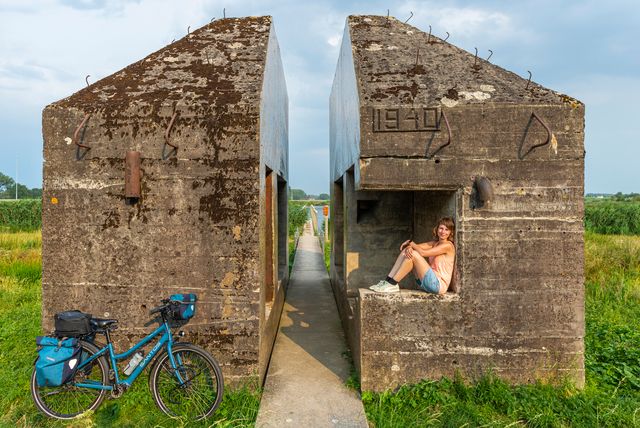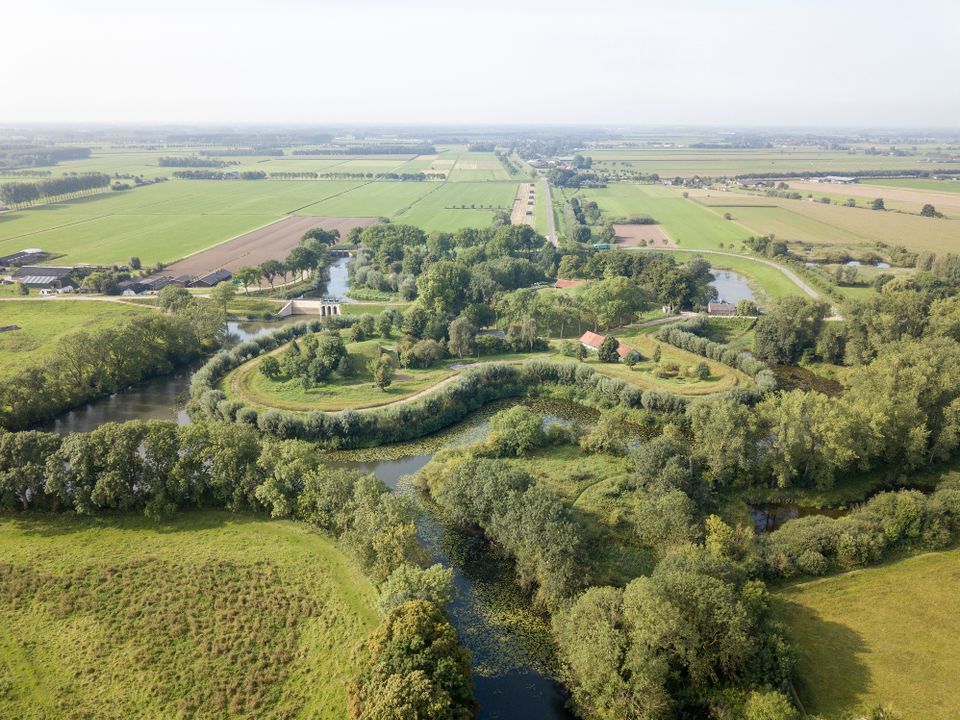Operation
The Dutch Water Defence Lines are a UNESCO World Heritage Site because they comprise a unique interplay of landscape, water and forts. But how does this interplay work?
The forts are the most well-known part of the Dutch Water Defence Lines; robust structures that form a strong front. Less well known is the function of the landscape and the secrets hidden within it. The water management system can still be found in the form of locks, dikes and canals. But how exactly did this flooding, the inundation, work?
Landscape with a story
The emptiness in this landscape is anything but accidental. Around the forts were invisible forbidden circles. No or limited building was allowed within these circles, so there was an unobstructed view from the fort. The low polder landscape between the forts could be flooded to block the enemy's way. These are the inundation basins.
If you don’t know about them, you won't see them. Because in the past and still today, agriculture and nature prevail on these old military defence plains. Hidden like secrets in the landscape, they are the beauty of the Dutch Water Defence Lines.

Water as an ally
Where water was often a threat to the Netherlands, it was used as an ally within the Dutch Water Defence Lines. With a succession of rivers, locks, dikes and canals, the country was flooded in a controlled manner in a short period of time. This allowed us to surprise the enemy and delay an attack.
A layer of water was an impregnable obstacle that no one saw coming. Soldiers had to slog through trenches and heavy artillery sank into the mud. A challenging interplay of engineering, ingenuity and water formed the line of defence. There was no way through.
Several water works still have a function in today's water management. They help protect the land from water and sometimes drought.

Strong front
Within the Dutch Water Defence Lines there were places that could not be flooded. Here, the enemy could penetrate the area behind it. So these places had to be protected. This was done with forts and batteries. These kept soldiers safe and stored weapons. These strong buildings were hidden in the landscape like a strong front. Ready to block the enemy's way.
The forts, bunkers, trenches, casemates and batteries are now visible and tangible. This makes them the best-known parts of the Dutch Water Defence Lines. For years, however, they were forgotten. They lay abandoned and overgrown. But today, these are the places where stories are told over and over again. These historical structures have a new function. They have become meeting places where you can enjoy food, drink, nature, art and culture together. The Dutch Water Defence Lines are at the heart of our society.

